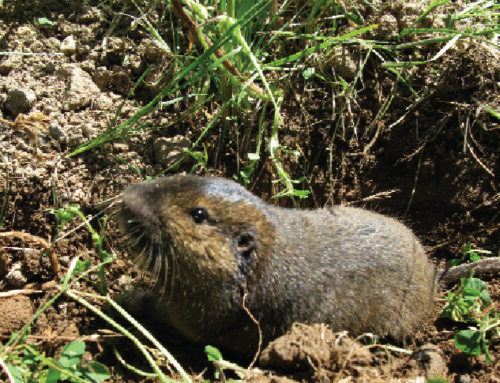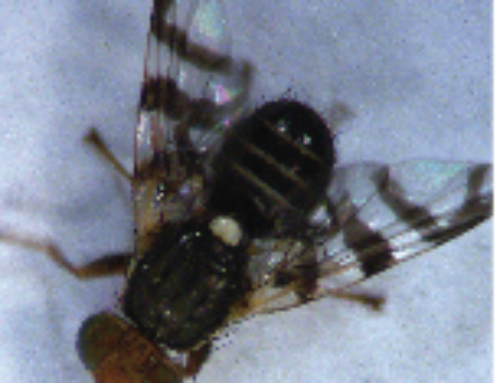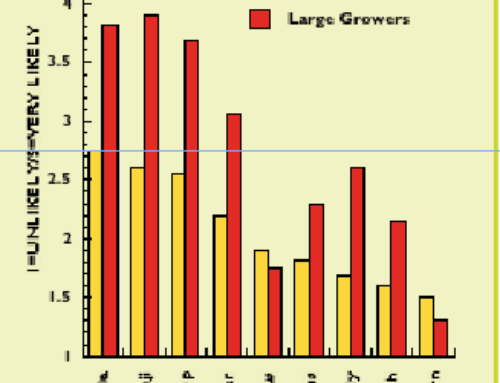
Washington Fruit orchard manager Dan Plath recommends diversifying plantings with both nursery trees and those raised in place.
Planting an orchard today is riskier than it used to be, says Jerry Haak, a fruit grower at Sunnyside, Washington, and one of the biggest risks is not getting the trees to grow well, because tree caliper directly relates to fruit tonnage. “You can’t mess up on production because the costs are so high there’s not a big margin for error,” he said.
A new study by Washington State University economists shows that the cost of establishing a 40-acre block of Gala apples in the Pacific Northwest is more than $13,000 per acre, or $23,634 if costs through year three are included. The cost of buying and planting trees is estimated at $7,677 per acre for trees planted on a 4- by 10-foot spacing.
Though growing the trees in the orchard, starting with sleeping eyes or bench grafts, reduces initial planting costs, it can be a false economy, said Haak. If the grower can find nursery trees of the right variety on the right rootstock with a guaranteed 5/8-inch caliper for a contract price, that’s a better deal than planting in place, he believes. “There’s no cheap way to grow an orchard. If you cut corners, it’s probably going to cost you more in the long run. It’s always cheapest to do it right the first time. You have to do whatever it takes to get the trees to grow.
Contract price
Disadvantages of growing trees in place, besides the extra work involved, are that they will take longer to come into production, and the ground is out of production longer. “Buying trees at a nursery at a contract price is going to get you into production faster,” Haak said, noting that the speculation price is usually about 25 percent higher than for contract nursery trees.
A grower might ask the nursery about working out a payment plan—but pay before receiving the trees, not after, he stressed. If you don’t have time to order contract-grown trees for your target planting date and there are none available, you might be put on a waiting list and end up receiving trees of 3/8- to ½-inch caliper. “Absolutely don’t do that,” Haak warned. If you can’t delay your planting date, then growing your own trees is preferable to planting small nursery trees and spending the first year growing the trees anyway, he believes.
Dan Plath, orchard manager at Washington Fruit and Produce Company in Yakima, said his company, which is expanding at a rate of 10 percent a year (not including replanted orchards), uses some nursery trees and grows some in place. “I don’t think either one is better,” he said. “Doing some of both is another way to diversify ourselves. You spend more money on a big nursery tree, but that way you get to pick some apples in year two and potentially a substantial crop in year three, and, if the market’s good, that’s going to look like a good investment.
Conversely, if the market’s not good or you have hail, you would have been better off to go the cheap route by planting bench grafts or sleeping eyes. We can’t predict which one’s going to be better, so we’re going to do both, and we’re going to focus on planting trees on good sites and making the right decisions in terms of genetics.”
A profitable outcome depends on a second-leaf crop, said Haak, who aims to harvest 15 bins per acre the year after planting, enough to cover half of the third-leaf operating costs. “Inability to get a tree to grow is probably the biggest cost that you have, and it’s an indirect cost—you just take longer to produce fruit. It delays getting the income side going.” Haak, whose parents were dairy farmers, got into the orchard business in the early 1980s after working as a loan officer for Farm Credit Services.
He had seen people making good money growing apples and wanted to be a part of it. He got advice from industry leaders, such as Ralph Broetje, Grady Auvil, Bruce Allen, and Dave Allan, and planted Gala, Fuji, and Granny Smith. Haak now is owner or part owner of about 700 acres of tree fruits. In 2000, he sold 150 acres of Gala, Fuji, and Granny Smith to help him recapitalize his operation and plant newer strains. He has not planted managed varieties because acreage royalties can add thousands of dollars per acre to the up-front costs.
The industry has changed since the 1980s, when all the new varieties were returning big money, he recalled. “Then, we were paying off orchards in three and four years. We were getting $700 a bin for our first Fuji returns, with 35 bins per acre in the third year.” Today, the grower must plant a variety with the potential to return at least $180 to $200 per bin, he said. “If you’re only going to get $150 per bin for your fruit, you should not be planting apples.”
On the cost side of the balance sheet, labor is becoming a bigger factor, so Haak is planting orchards that are more labor efficient. He’s looking for ways to reduce labor and ladder work for pruning, thinning, and tree training. He’s using three-leader trees on a V-trellis system and instead of tying every limb down flat to the wire, he is more inclined to let the tree grow the way it wants to. While he’s planting with new technology in mind, he’s not made major changes and notes that increasing the alley width from 12 feet to 13 feet results in an 8 percent reduction in the plantable area.
The orchard will have fewer trees per acre, and yields are directly related to tree number in the first five years of an orchard. Plath said he thinks the industry is moving towards rows only 10 feet apart or narrower in order to optimize tree density. “We’re not going to build our orchards to fit a machine. They have to build the machine to fit our orchards.”
He’s found platforms to be a good investment for the company, with each machine clocking 1,200 hours per season. Another good investment has been a tree planter that he copied from Allan Brothers, which can plant three rows at a time. “When I first started here in 2003, we were mostly planting trees with a shovel,” he said. “We probably spent $600 per acre to plant an orchard, and at that time we were planting 700 trees per acre.”
With the machine, which cost $30,000, planting costs are down to only $200 per acre. Since the company plants around 500 acres annually, the machine quickly paid for itself. “The little things like that add up,” Plath observed. •




Leave A Comment